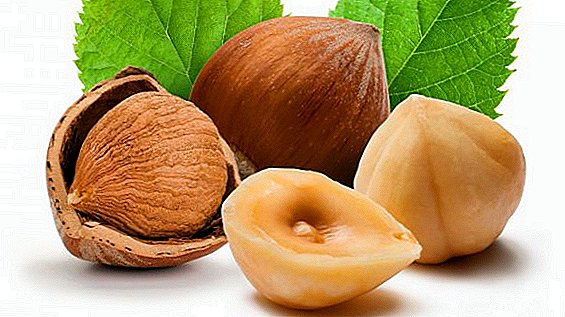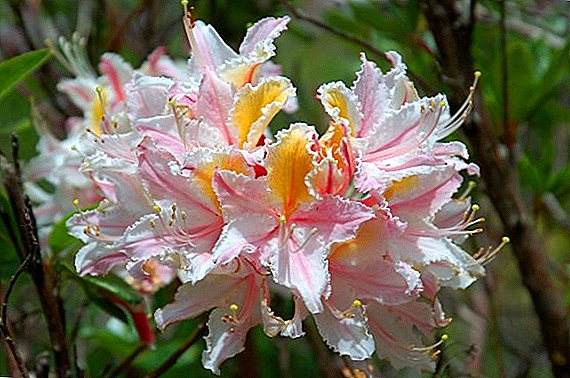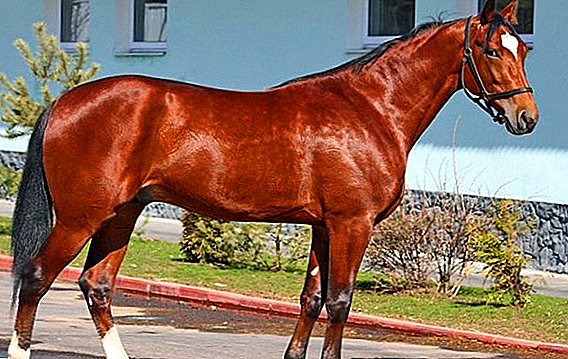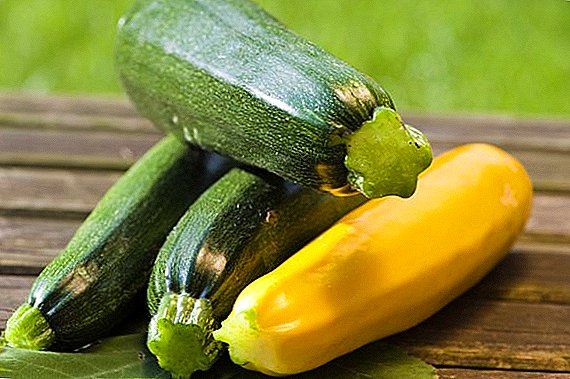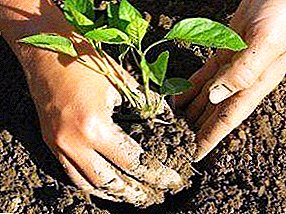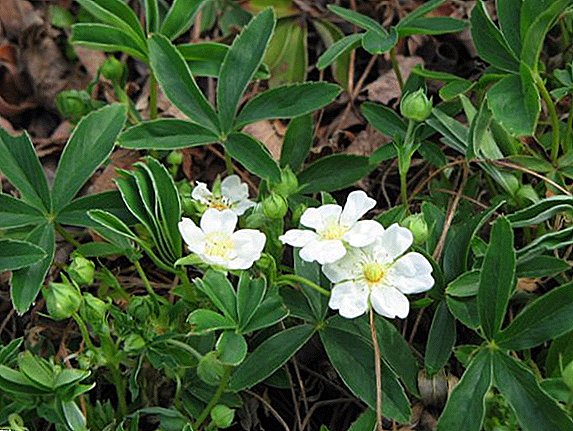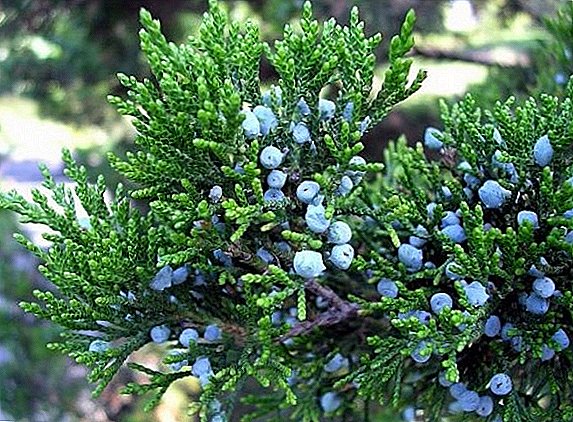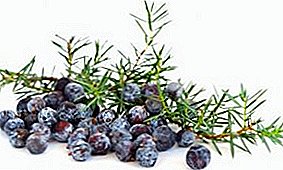 Juniper is a plant that belongs to the cypress family. It appeared 50 million years ago, and around the world there are about 70 species of this plant. Some species of juniper reach up to 15 m in height.
Juniper is a plant that belongs to the cypress family. It appeared 50 million years ago, and around the world there are about 70 species of this plant. Some species of juniper reach up to 15 m in height.
Types and varieties of junipers used in landscape design
We turn directly to the types and varieties of juniper.
 Juniper ordinary - has a light green color and grows up to 10 m in height and about 1.5 m in diameter. Looks great as a hedge and in compositions. Amenable to shearing.
Juniper ordinary - has a light green color and grows up to 10 m in height and about 1.5 m in diameter. Looks great as a hedge and in compositions. Amenable to shearing.
Red cedar - originally from North America. Grows above 15 m. Bluish needles of a compact conical shape suitable for the design of your yard. Interesting varieties of this juniper - Pyramidalis and Glauka.
Juniper horizontal - a group of varieties with green, bluish-blue, white-spotted color. Reaches up to 2 m in diameter and up to 0.5 in height. Used for foregrounds in compositions and borders. Most often, dwarf forms of juniper are planted, such as Andpress, Andorra Compact and Viltoni. 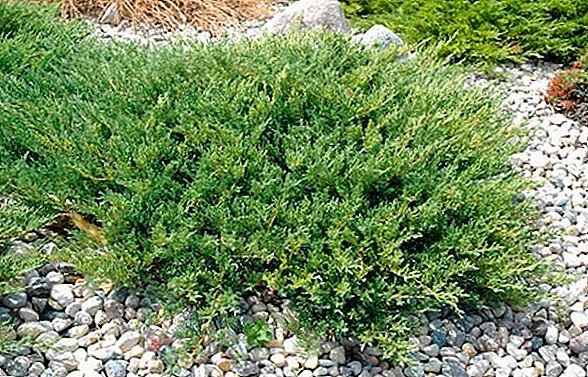 Juniper Cossack - this type of plant reaches up to 1 m in height and 3 m in diameter. Needles can be green, blue, white and yellow-spotted. Used for planting on the lawn and in large rock gardens. There are both high and dwarf varieties: Variegata, Kupressifolia and Tamariscifolia. Of the dwarf known most of all Nana.
Juniper Cossack - this type of plant reaches up to 1 m in height and 3 m in diameter. Needles can be green, blue, white and yellow-spotted. Used for planting on the lawn and in large rock gardens. There are both high and dwarf varieties: Variegata, Kupressifolia and Tamariscifolia. Of the dwarf known most of all Nana.
Juniper rocky - The plant has a pyramidal shape with a gray-blue color. Reaches up to 12 m in height and 1.5 m in diameter. Used for group plantings in the background of compositions. 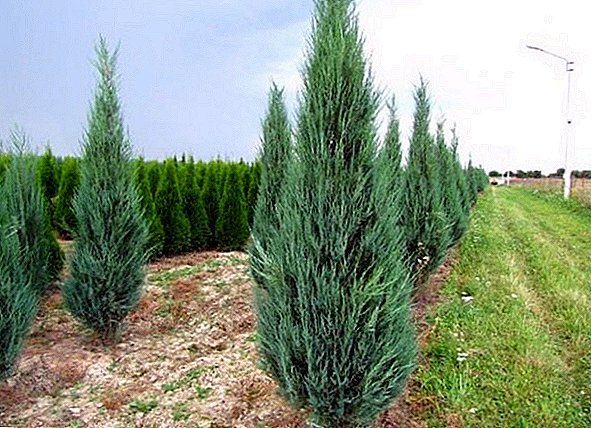 Juniper scaly - The plant that came to us from China has a blue color and grows up to 2 m in diameter and up to 2 m in height. The shape of the crown depends on the variety. This group of junipers is used in rock gardens.
Juniper scaly - The plant that came to us from China has a blue color and grows up to 2 m in diameter and up to 2 m in height. The shape of the crown depends on the variety. This group of junipers is used in rock gardens. 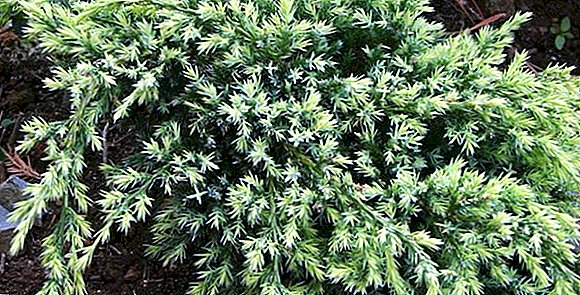
How to choose a juniper seedling when buying
First of all, you should choose a juniper variety that will look original in landscape design.
Also worth considering that junipers bloom in April and May. The first fruiting begins at the age of 5-15. Fruits are formed by the accretion of scales and ripen annually in the fall. When choosing the seeds of this plant, it is important to observe the following time intervals - it is necessary to prepare immature seeds in August. So the probability of germination will be greater. The collected material should be planted immediately, but the seeds of juniper will grow only 2-3 years after planting.
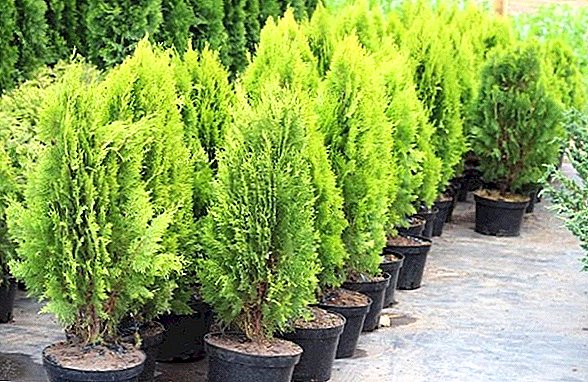 Successful rooting and plant growth depends on the quality of the seedlings. Therefore, when buying, pay attention to the following:
Successful rooting and plant growth depends on the quality of the seedlings. Therefore, when buying, pay attention to the following:
- A plant with an open root system is not worth buying;
- Get juniper with earth clod in sackcloth;
- The root system and branches should show the increments of the current year;
- There should be no cracks on the juniper trunk;
- New shoots should not break and be flexible;
- The color of the crown should be uniform and not have brown patches or white flakes at the base;
- We recommend taking plants that were grown in containers.
The root system of all plants of this species is superficial and fibrous. This allows juniper to grow strongly and strengthen the soil. To the ground, this plant is undemanding - it will grow on stony, poor sandy soils.
How to plant juniper in his country house
Any type of juniper is popular in the design of the landscape. The advantage of juniper is longevity.
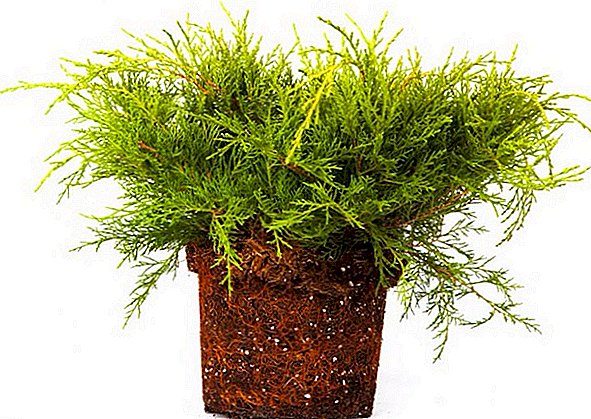
Did you know? Juniper can live up to 600 years.
This plant is widely used due to its various colors and forms. In order for your juniper to grow up healthy and beautiful, you should take care of the place and time, which will be discussed in this section.
Terms of planting juniper sapling
The beginning of spring is the perfect time for planting juniper. Landing is also possible in the fall, closer to October. Juniper is very photophilous, but, for example, common juniper is well tolerated and a little shading.
Selection and preparation of soil for planting
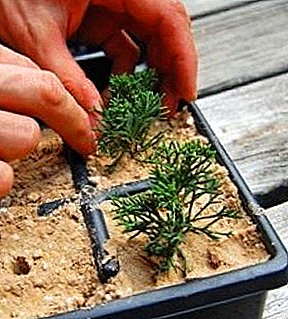 First you should choose a place for planting juniper. This plant loves an open, well-lit area of the yard or garden. Prefers soil with loamy or sandy light soil. It must be nutritious and hydrated.
First you should choose a place for planting juniper. This plant loves an open, well-lit area of the yard or garden. Prefers soil with loamy or sandy light soil. It must be nutritious and hydrated.
If the soil is clay and heavy, then you should add to the planting pit a mixture of garden soil, sand and coniferous land, which can be collected under spruce or pine trees in the forest. If you have a juniper virginsky, then fit and clay soil.
Rules for planting juniper seedlings in the ground
Now that we have chosen the variety and the place where the plant stands, we need to understand how to plant the juniper so that it grows and does not die when it is planted.
A sapling with a closed root system is plentifully watered, but not free from coma. The hole dug in advance should be 3 times the diameter of the roots of the purchased juniper. The most successful soil mix for planting juniper is as follows: mix two parts of sod land, humus and peat with one part of sand. For optimal survival under each seedling, add 150 g of nitrophoska, and after planting - "Appin".
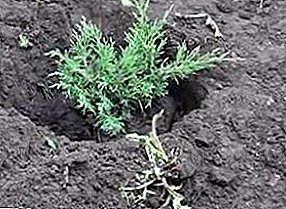 Bury the seedling so that the root neck is not deeper than the previous level. The planting of juniper is completed by irrigation and mulching. If not one juniper is planted, leave enough space between them, from 0.5 to 4 meters. Junipers do not like cramps.
Bury the seedling so that the root neck is not deeper than the previous level. The planting of juniper is completed by irrigation and mulching. If not one juniper is planted, leave enough space between them, from 0.5 to 4 meters. Junipers do not like cramps.
Also, do not bypass 4 main mistakes when planting juniper in the ground:
1. Violation of earthy coma during landing. It is necessary to keep an earthen room, otherwise the roots will dry out and die off. For better safety, coma should be watered well. Some gardeners leave burlap in the soil, as it still rotters, but the hard wire that remains to hold the burlap should be removed.
2. A small pit for planting or a large earthen ball. It is worth adhering to the rule: between the lump and the walls of the pit should include the palm of an adult man, and the root neck of the juniper must be at ground level. After the earth juniper has been planted, the pit is filled with pre-harvested soil, which includes additives useful for the plant. If this is not the case, then the land taken out during the preparation of the seat will do, but in this case the juniper will develop worse.
3. Backfilling root collar. It is necessary to fill the roots of juniper so that the plant is free from the ground to the level of the root collar.
4. Ignoring the special requirements of juniper when planting. Planting juniper has its own nuances, which depend on the type or variety of plants. In order for any juniper variety to adapt well to the new location, it is necessary to create optimal conditions for its development.
Growing and caring for juniper
Growing juniper does not require much effort. Due to its simplicity to the ground, landscape designers use the plant very often. Juniper care does not require any special intervention on your part.
It is enough to properly water and fertilize the soil, in the winter and summer to apply mulching and sometimes prune the juniper. And how to do it correctly, we will look at this section.
Watering and fertilizing the soil
 During the vegetative period, you need to water it only in extreme heat, but you should not do it more than once a month. It takes 10-20 liters of water for one adult bush. The plant will also thank you for spraying the foliage weekly in the evening. Especially if you grow Chinese or ordinary juniper in your garden. It should occasionally loosen the soil and remove weeds. It is necessary to feed the juniper. It is enough to sprinkle 40 g of nitroammophoska in the spring around the barrel circle and pour over the landing site. If at the site of planting the soil is poor, the plant will need fertilizing the whole season. But it is necessary to do this no more than once a month. In the first winter, the young juniper should be covered with a thick layer of spruce branches and mulch.
During the vegetative period, you need to water it only in extreme heat, but you should not do it more than once a month. It takes 10-20 liters of water for one adult bush. The plant will also thank you for spraying the foliage weekly in the evening. Especially if you grow Chinese or ordinary juniper in your garden. It should occasionally loosen the soil and remove weeds. It is necessary to feed the juniper. It is enough to sprinkle 40 g of nitroammophoska in the spring around the barrel circle and pour over the landing site. If at the site of planting the soil is poor, the plant will need fertilizing the whole season. But it is necessary to do this no more than once a month. In the first winter, the young juniper should be covered with a thick layer of spruce branches and mulch.
In the spring, move the mulch away from the trunk to avoid rotting, as the soil is wet at this time.
Did you know?It was observed that the air is there, gJuniper planted,much cleaner. During the day, a hectare of juniper evaporates 30 kg of phytoncids.
The benefits of mulch in summer and winter
The advantages of mulching in the summer and winter seasons are many:
- mulch prevents the evaporation of moisture from the soil at the roots of juniper;
- it protects the roots from overheating or freezing;
- correctly using mulch, in the soil you can adhere to the optimum level of acidity.
- Mulch enriches the earth with nutrients and prevents leaching and weathering.
- mulch inhibits the growth of weeds and promotes the growth of microorganisms in the soil.
Cropping and crown formation
Formation of the juniper crown is not an easy thing. On this depends not only the appearance of your hedge, but also the health of the plant itself. This plant is distinguished by its slow growth, so be careful when pruning, because in case of an error your shrub will recover for a long time. For juniper, it is sometimes enough to remove dried twigs.

Did you know? When juniper wood becomes durable, it is used to make canes and pencils.
Reproduction of juniper in different ways
When this plant appears in your garden for the first time, you will want to multiply it. Because of the nature of the structure, this is quite simple, and the reproduction of juniper will give you pleasure. There are several methods:
- Seeds;
- Cuttings;
- Layering.
Also note that the juniper has a gender - male and female. Many gardeners often wonder why there are no juniper berries. And it depends on the "floor" of the juniper whether there will be cones on your plant or not.
Seeds
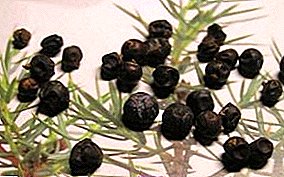 Since juniper saplings are not very cheap, we offer you a more economical breeding option - seeds. This is not an easy task, but it can be done independently.
Since juniper saplings are not very cheap, we offer you a more economical breeding option - seeds. This is not an easy task, but it can be done independently.
The main thing is to adhere to the following rules:
- Seed preparation. To do this, you need to find a fruit-bearing shrub and tear off the dark blue cone. You should be careful with this, as there may be green buds on the bush - immature seeds.
- Soak cones in water and rub it. Since the shell of the cones is very dense, it must be destroyed. To do this, rub the grain between two sheets of sandpaper. We wash the extracted seeds.
- In the fall we plant seeds in a box with soil. The depth of the fossa should be small, about 2-3 cm.
- We take the box into the yard and leave it until the end of winter.
- Planting seeds on the garden is held in May. In the first weeks we protect it with the help of mulching and weeds are removed.
- Planted grown plants in a permanent place after 3 years.
Cuttings
Cutting is a universal means of breeding all varieties of juniper. It is best to do this in spring.
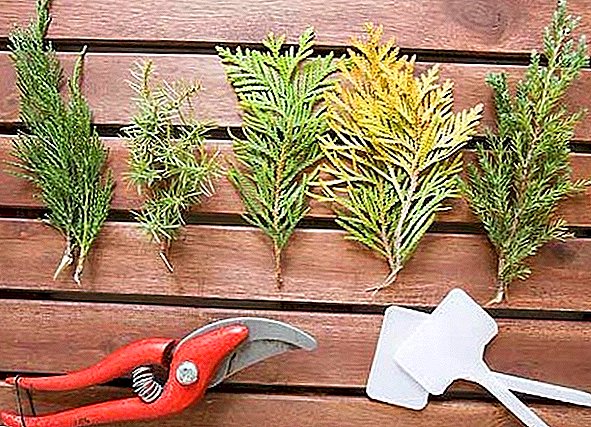 The following steps should be taken:
The following steps should be taken:
- Cut the cuttings in August when the young shoots are already woody.
- Preparation of cuttings is carried out in cloudy weather, as the rays of the sun can cause a negative impact on planting material and adult juniper.
- For grafting using the tops of lignified shoots. It all depends on the variety: in columnar and pyramidal varieties, shoots that are directed upwards are cut; creeping varieties can collect any shoots; in spherical or bushy forms, any shoots can be cut.
- Cut the shoots worth a sharp knife. Then they are exempt from branches and needles.
Important! Cut the shoots can not be stored.
If it is not possible to plant immediately, they are placed for 1-3 hours in a container with water. Plant the planting material in the substrate and pour the kidney with sodium humate or heteroauxin. This will accelerate the formation of roots. Plant cuttings in wooden boxes and do not forget about the drainage. Immerse the cuttings into the ground at a depth of 3 cm at an angle of 60 °.
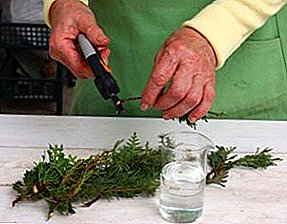 After planting, place the boxes in a dry greenhouse with optimal climatic conditions: high humidity, air temperature not lower than 16 ° C and not higher than 19 ° C. After budding - 26 ° C. Also it is necessary to protect cuttings from the sun's rays.
After planting, place the boxes in a dry greenhouse with optimal climatic conditions: high humidity, air temperature not lower than 16 ° C and not higher than 19 ° C. After budding - 26 ° C. Also it is necessary to protect cuttings from the sun's rays.
Cuttings are demanding for watering. It is necessary to spray the plant at least 6 times a day. Water the soil as it dries. The roots on the cuttings will appear after 50-90 days. But do not rush to transplant them. Wait a year so that the roots are strong and grow. If this is not possible, then transplant the cuttings very carefully.
Taps
Some gardeners propagate juniper by layering. But it is worth doing with species that belong to the creeping. You need to root only young, gaining strength twigs.
The method consists in the following:
- Loosen the soil around the bush;
- Introduce peat and sand, and then water;
- Clean the branches that are intended for rooting, retreating from the base 100-200 mm;
- Pull the cleaned branch to the ground and secured with small pins;
- Periodically water and spud.
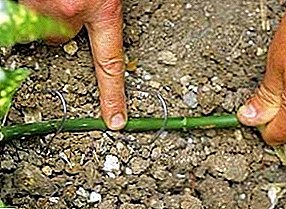
Useful and healing properties of juniper
Juniper is also used for medicinal purposes. And in this section we will talk about them.
Used mainly mature black berries, young shoots. Rarely - the roots. For treatment, make a special decoction of berries or needles. It can be used externally and internally. The roots are used for bronchitis, tuberculosis, stomach ulcers, skin diseases. A decoction of the branches helps with diathesis.
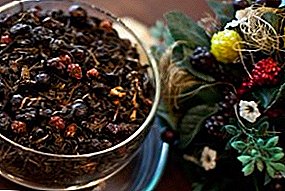 Juniper fruits are harvested in September - October. Pine needles can be prepared at different times. Berries should be dried in a dryer at a temperature not higher than 30 ° C or in the attic. Needles are dried in the shade. The shelf life of dried berries or needles - up to 3 years.
Juniper fruits are harvested in September - October. Pine needles can be prepared at different times. Berries should be dried in a dryer at a temperature not higher than 30 ° C or in the attic. Needles are dried in the shade. The shelf life of dried berries or needles - up to 3 years.
In former times, smoke burned branches fumigated housing and chewed berries in severe epidemics of influenza and cholera. This plant improves kidney function and disinfects the urinary tract.
Important! You should not use juniper or preparations made from it, with acute or chronic inflammation of the kidneys.
Also, decoction and tincture are used for diseases of the joints, tumors, rheumatism: grinding with neuralgia and paralysis is done.
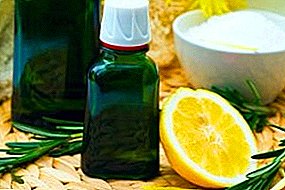 Juniper oil is considered a very valuable medicine. It disinfects and accelerates the healing of wounds, eliminates depression, normalizes pressure. With influenza or acute respiratory infections, juniper oil is rubbed into the chest and neck.
Juniper oil is considered a very valuable medicine. It disinfects and accelerates the healing of wounds, eliminates depression, normalizes pressure. With influenza or acute respiratory infections, juniper oil is rubbed into the chest and neck.
Alcohol tincture is used as an expectorant. For skin diseases, rashes, shingles, scabies, wounds, ulcers, bruises, use juniper tincture. If you have pain in the ears, use the tincture - bury it in your ears and rub it around them.
Juniper pests and diseases, their treatment
Juniper, like other plants in your garden, is often affected by pests and diseases. In this section, we will explain why juniper dies, and how it can be prevented; how to deal with pests that can spoil the look of your plant.
Juniper Fusarium
The causative agent of this disease is the fungus Fusarium. It causes rotting of the roots. The fungus penetrates the vascular system, and the roots of juniper begin to grow brown, since nutrients do not enter the crown. From this, the juniper turns yellow, and then the needles blush and fall off. The plant itself begins to die. Most often, the mushrooms settle in young plants. On the roots appears gray-white plaque with high humidity.
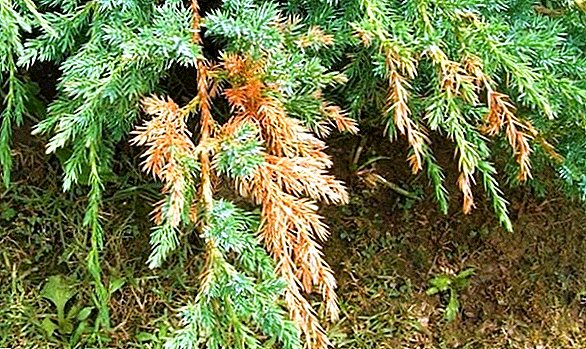 The control measures are very simple. It is best to promptly destroy dried plants with roots. For prophylaxis, young plants are planted with a solution of Baktofit or Vitaros before planting. At the first signs of wilting, the ground under the plants is watered with a solution of Fitosporin-M or Gamair.
The control measures are very simple. It is best to promptly destroy dried plants with roots. For prophylaxis, young plants are planted with a solution of Baktofit or Vitaros before planting. At the first signs of wilting, the ground under the plants is watered with a solution of Fitosporin-M or Gamair.
Juniper Rust
The main pathogen is the Gymnosporangium mushroom. The spores of these fungi germinate on shoots, needles and cones. On the affected areas appear thickening, a form similar to the spindle, and begins the death of the branches.
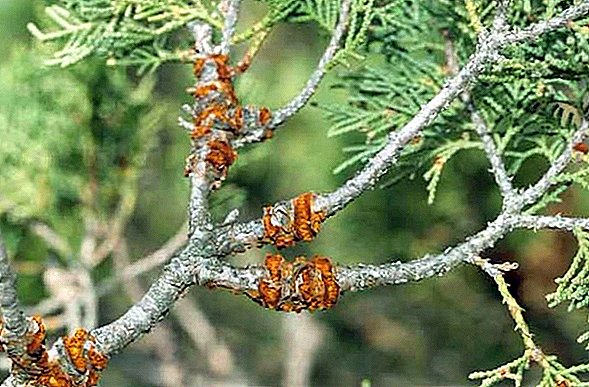 Blisters form on the trunks, then the crust dries on them, and small wounds appear. They form a golden-brown scurf, the so-called rust. Spores quickly spread in high winds and infect rosaceous cultures. Over time, the juniper dries out, and the needles crumble. Control measures are the same as when the branches are drying out. You should also place the juniper away from the rosaceous plants.
Blisters form on the trunks, then the crust dries on them, and small wounds appear. They form a golden-brown scurf, the so-called rust. Spores quickly spread in high winds and infect rosaceous cultures. Over time, the juniper dries out, and the needles crumble. Control measures are the same as when the branches are drying out. You should also place the juniper away from the rosaceous plants.
Shrinking branches
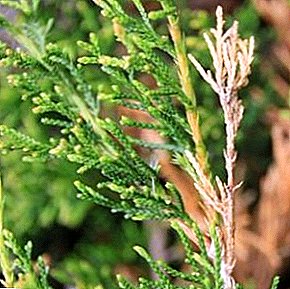 The causative agents are several species of fungi: Cytospora pini, Diplodia juniperi, Hendersonia notha, Phoma juniperi, Phomopsis juniperovora, Rhabdospora sabinae.
The causative agents are several species of fungi: Cytospora pini, Diplodia juniperi, Hendersonia notha, Phoma juniperi, Phomopsis juniperovora, Rhabdospora sabinae.
With the defeat of this disease, the juniper bark dries out, and small brown or black bodies appear on it. The needles gradually turn yellow, and the branches of the bushes dry up.
Control measures are as follows: используйте качественный посадочный материал, обрезайте пораженные ветки и дезинфицируйте раны на всех срезах 1% раствором медного купороса. Также не забывайте собирать и сжигать все обрезанные пораженные ветки.
Альтернариоз можжевельника
Возбудителем является гриб Alternaria tenuis. На пораженной хвое появляется черный налёт. Она опадает, и ветки засыхают. Fight with the fungus can be the same methods as when the branches dried out.
Juniper Bark Nectriosis
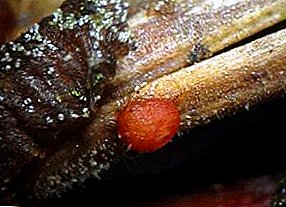 The causative agent is the fungus Nectria cucurbitula, with the development of which red pads of sporulation are formed on the surface of the affected bark. Over time, the branches dry up. Also, the fungus causes the extinction of the bark of individual branches. The needles turn yellow, and the affected branches dry up.
The causative agent is the fungus Nectria cucurbitula, with the development of which red pads of sporulation are formed on the surface of the affected bark. Over time, the branches dry up. Also, the fungus causes the extinction of the bark of individual branches. The needles turn yellow, and the affected branches dry up.
The control measures are the same as when the juniper branches are drying out.
Juniper also affect pests. Parasites lead to a loss of decoration, cause great harm to the bush and cause its death.
Juniper aphid
In September-October, the parasites lay eggs, which overwinter within the branches and feed on the sap of pine needles. To eliminate pests, use drugs Confidor and Calypso.
European Juniper Shchitovka
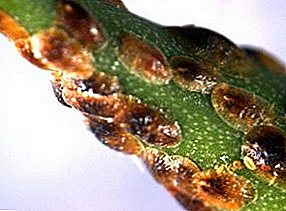 It affects all kinds of juniper. Pests lodge on young cones, berries and needles. Juniper does not grow from these parasites, and the needles gradually turn brown. You can also fight them with Confidor and Calypso. Processing should be carried out every 14 days 2-3 times, changing the drug.
It affects all kinds of juniper. Pests lodge on young cones, berries and needles. Juniper does not grow from these parasites, and the needles gradually turn brown. You can also fight them with Confidor and Calypso. Processing should be carried out every 14 days 2-3 times, changing the drug.
Juniper mealybug
Parasite larvae hibernate under the fissure bark of thick and thin branches. The needles turn brown and crumble, and the plants are populated with soot fungi and turn black. In the middle of summer, the larvae grow. Females lay eggs on thick branches.
It is very difficult to get rid of worms. It is required to treat juniper with poisons at least 3 times with an interval of 10 days. The best treatment for the treatment of the drug Angio.
Juniper Moth
The pest is settled in the middle of the crown. During April, the caterpillars weave branches into large nests.
At the beginning of June, butterflies lay larvae for new generation in the same nests. Young caterpillars damage 75-80% of the needles.
The juniper should be treated with pesticides from the end of June at least 2 times, with an interval of 11 days. Suitable drugs Angio and Calypso.
Galitsa ordinary
 The larvae form cone-shaped galls on the tops of the juniper shoots. When ripe, the top of the cone bends outwards.
The larvae form cone-shaped galls on the tops of the juniper shoots. When ripe, the top of the cone bends outwards.
The affected juniper branches should be treated with pesticides 2 times with an interval of 12 days.
Mite flatrope Oregon
These parasites hide in the folds of the cortex. Without a microscope, they are invisible. Juniper death from them is often blamed on fungal infections.
The treatment is carried out with Caesar and Actellic not less than 3 times with an interval of 10 days. In this article, we examined the varieties and types of juniper, methods of its cultivation and methods of caring for it. We learned how to correctly cut a juniper without damaging its health, and how to protect the plant from pests and diseases.


